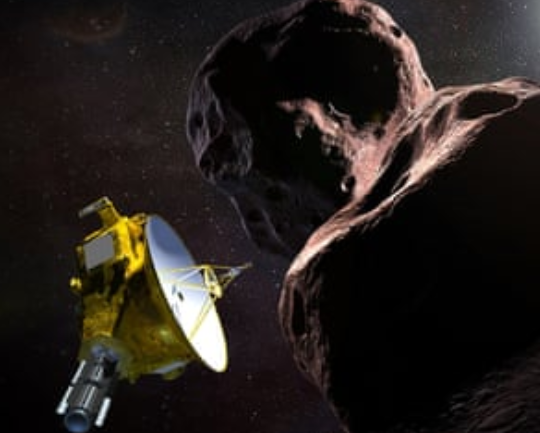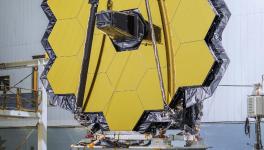What NASA’s New Horizon Spacecraft Reveals About Most Distant Object Ever Visited

Image Courtesy: Guardian
What shaped the formation of the planets has intrigued scientists for ages. Now, NASA’s New Horizons spacecraft has been reported to have unveiled details of the most distant object visited by a spacecraft. And this has provided scientists good details to solve the mystery of planetary formations.
The distant object is known as Arrokoth, which is a peanut-shaped, ultra-red object. Arrokoth sits in the trans Pluto region, some 1 billion miles from the Pluto in the Kuiper belt. The Kuiper belt is a vast donut-shaped region and is home to many thousand dwarf planets and icy objects. The New Horizon spacecraft made the flyby on January 1, 2019. But due to the enormous distance from Earth, the spacecraft took very long in sending back data to the Earth about its brief encounter.
Notably, the New Horizon first encountered the Pluto back in 2015.
“Arrokoth has turned out to be astonishing in terms of what we’ve learned from it. It tells us some profound truths about our solar system. This is not just a space potato. It’s a remarkable world that’s told us a remarkable story,” said Prof Bill McKinnon, a planetary scientist at Washington University in St Louis, who is lead author of the latest work before a presentation at the annual meeting of the American Association for the Advancement of Science (AAAS) this week.
The position of Arrokoth in the Kuiper belt is known as the solar nebula, which surrounded the newly formed sun. The solar nebula was once the fringes of the dust and gas clouds. The planetary development in this region was stalled at an early stage because the density of material available was lower than what was needed to planet formation. An exploration of these areas in the space allows the scientists to look back into the epoch where today’s planetary formation originated.
“This place is very far from the sun; so far that the temperatures are nearly at absolute zero. That preserves objects in a kind of stasis or time capsule,” said Dr Alan Stern, New Horizons’ principal investigator.
The data obtained from New Horizon also helped scientists validate their theories of planet formation. For decades, scientists have argued two possible scenarios as far as the planetary formation is concerned. In the first one, called the hierarchical accretion, small pebbles and grains stuck occasionally, which eventually led to the formation of bigger and bigger objects. Over millions of years, planets accumulated matter with such random, forceful collisions.
In the second scenario, called the cloud collapse, the higher density particles in the solar nebula were drawn towards each other and at certain point they underwent spontaneous gravitational collapse.
“Arrokoth’s appearance and composition hint towards the validity of the cloud collapse theory. The imagery shows no signs of violence, no fractures, the two lobes don’t looks smashed together. Everything about Arrokoth points towards a gentle coalescence. The object’s two lobes are also uniform in colour and composition, both having ultra-red surfaces containing organic compounds, which implies the fragments were orbiting nearby each other, rather than coming from disparate parts of the nebula,” said Stern, who is based in Southwest Research Institute in Boulder, Colorado.
The results were revealed in three papers published in Science: Paper I, Paper II and Paper III.
Get the latest reports & analysis with people's perspective on Protests, movements & deep analytical videos, discussions of the current affairs in your Telegram app. Subscribe to NewsClick's Telegram channel & get Real-Time updates on stories, as they get published on our website.















